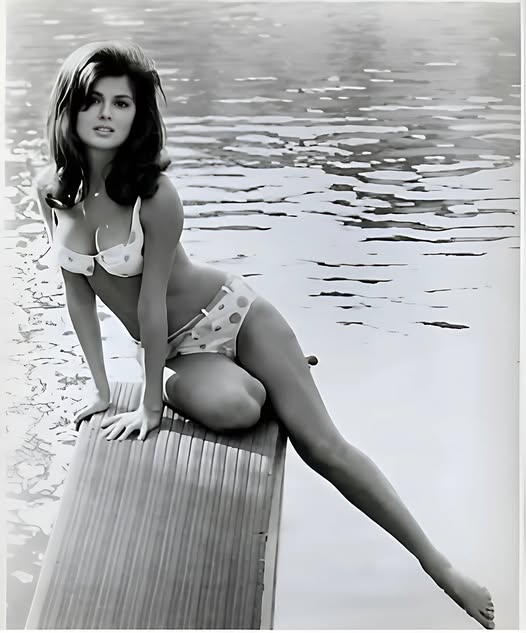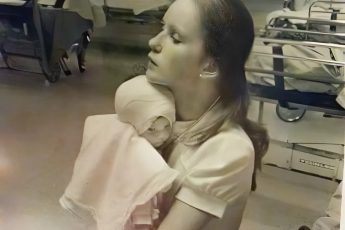In an era characterised by elegance and transformation, Pamela Tiffin was a shining phenomenon on the silver screen – an actress whose beauty was head-turning, but whose life story reveals much more than mere glamour. With wide, expressive eyes and a magnetic screen presence, she quickly went from teen model to Hollywood ingénue, captivating directors and audiences alike. But Pamela’s most intriguing moments took place not only on screen but also behind the scenes, especially the one that led her to leave Hollywood for the love, adventure and artistic chaos of Europe.

Born on 13 October 1942 in Oklahoma City, Pamela Tiffin Wonsoe grew up in the Chicago suburbs and began modelling as a teenager. Tall, poised, with a face that effortlessly caught the camera’s eye, Pamela quickly found success in fashion and even appeared in Seventeen magazine. But her arrival in film was almost a Hollywood cliché – she was discovered while on holiday in California and offered a film audition after catching the eye of a producer on the Paramount set.
At 19, she made her film debut opposite screen legend James Cagney in One, Two, Three (1961), Billy Wilder’s fast-paced comedy set in Cold War Berlin. Wilder, known as a tough director, was impressed by her timing, beauty and ability to hold her own against seasoned veterans. It was an explosive start, and Hollywood took notice.
Tiffin was followed by several hits, including Summer and Smoke (1961) and the classic teen film State Fair (1962), where she played the innocent and romantic Margie. She often played the role of the genteel American girl – radiant, a little naive and irresistibly charming. In 1963, she starred in Fly With Me and For Those Who Think They’re Young, further cementing her status as the screen sweetheart of the 1960s.
But despite her growing fame, Pamela Tiffin was not consumed by the Hollywood machine. She studied journalism at Hunter College while also acting in films, and was known as a deeply intelligent and curious person interested in the world beyond the studio set. This curiosity soon led her far from the glitz of Los Angeles.

By the late 1960s, Tiffin was becoming increasingly disillusioned with the roles she was offered – often superficial, utilising her beauty rather than her talent. Hollywood had a pattern, especially with women: package them, promote them, and then replace them. Pamela, however, did not want to play that game.
In 1967, on a trip to Italy, she met Edmondo Danon, a young Italian industrialist and son of the famous film producer Marcello Danon. It was a whirlwind romance. They were soon married and Pamela decided to stay in Rome, leaving behind the comforts and limitations of her American fame.
It was a bold move. At a time when most American actresses were chasing studio deals, Pamela was walking the streets of Rome, sipping espresso, raising two daughters, and starring in Italian films that ranged from high art to irreverent comedies. She starred in films such as Torture Me But Kill Me With Kisses (1968), a satirical dark comedy that became a cult hit, and worked with directors who appreciated her versatility far more than Hollywood did.
In Italy, she wasn’t just an American beauty. She was witty, bold and refreshingly unpredictable. Her career in Europe gave her a new creative freedom, and her roles reflected that. Although not all of her Italian films received international acclaim, they were often bold and experimental, showing a side of Pamela rarely seen in her earlier work.
Her life in Italy was also marked by friendships with intellectuals, artists and filmmakers. She moved easily between cultures, spoke fluent Italian and led a more bohemian, introspective lifestyle. The press still followed her, fascinated by the Hollywood starlet who had ‘gone off the grid’ and built a new life away from the spotlight.
By the 1980s, Pamela gradually withdrew from acting, preferring privacy and family life to public attention. However, her story has not faded. In 2017, the documentary The Pamela Tiffin Story, directed by her daughter Echo Danon, reignited the conversation about her, offering an intimate look at her journey – a combination of glamour, rebellion and self-discovery.

Pamela Tiffin passed away on 2 December 2020 at the age of 78. However, her legacy lives on – not only in the films she starred in, but also in the fearless decisions she made. In an industry that often chews up and spits out young starlets, she had the courage to leave on her own terms. She chased love and adventure rather than fame, found beauty in imperfection and blazed a unique path that still intrigues film lovers today.
Pamela Tiffin was more than just a Hollywood actress. She was a wanderer, a romantic and ultimately a woman who chose to live life to the fullest, even if it meant leaving the spotlight behind.





















